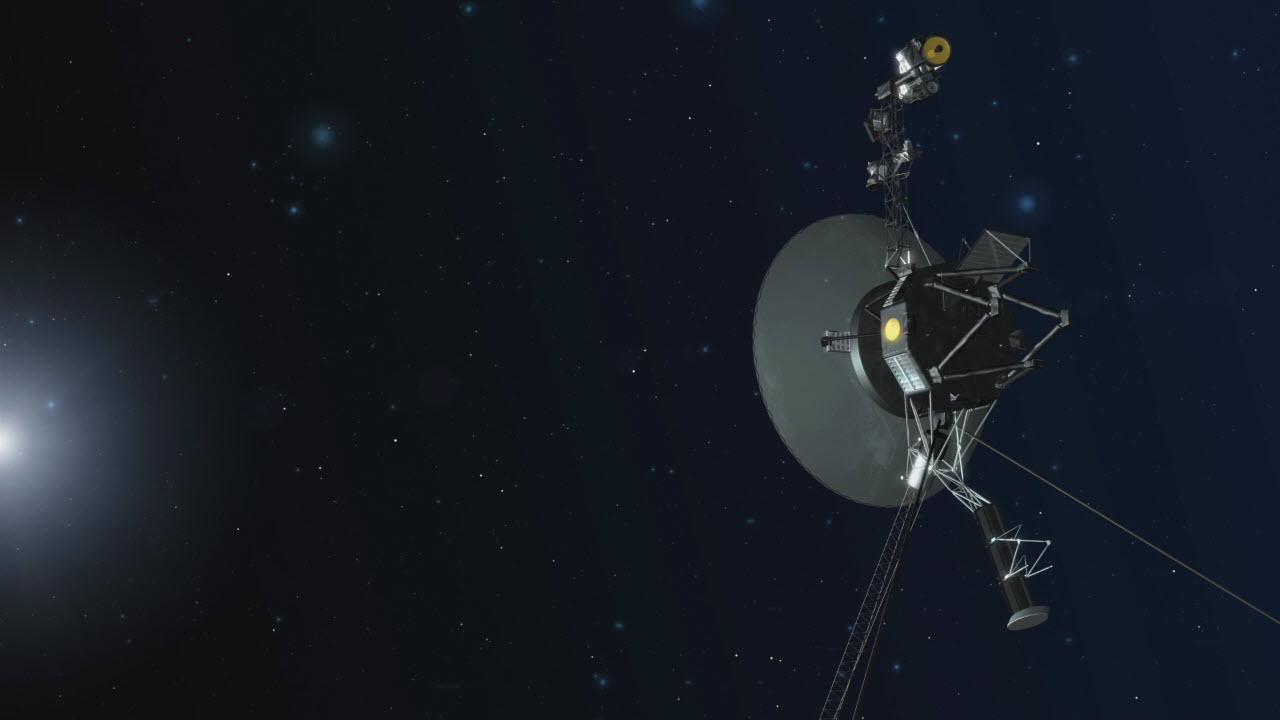Voyager 1 Just Fired Up its Backup Thrusters for the 1st Time in 37 Years

NASA's far-flung Voyager 1 spacecraft has taken its backup thrusters out of mothballs.
Voyager 1 hadn't used its four "trajectory correction maneuver" (TCM) thrusters since November 1980, during the spacecraft's last planetary flyby — an epic encounter with Saturn. But mission team members fired them up again Tuesday (Nov. 28), to see whether the TCM thrusters were still ready for primetime.
The little engines passed the test with flying colors, NASA officials said. [Voyager 1's Road to Interstellar Space: A Photo Timeline]
"The Voyager team got more excited each time with each milestone in the thruster test," Todd Barber, a propulsion engineer at NASA's Jet Propulsion Laboratory (JPL) in Pasadena, California, said in a statement. "The mood was one of relief, joy and incredulity after witnessing these well-rested thrusters pick up the baton as if no time had passed at all."
As Barber's words suggest, the mission team didn’t do this out of idle curiosity. Voyager 1 — which in August 2012 became the first human-made object ever to enter interstellar space — has long been using its standard attitude-control thrusters to orient itself into the proper position to communicate with Earth. But the performance of these thrusters has been flagging for at least three years, so mission team members wanted to find an alternative option.
A successful test was far from guaranteed. Not only was the long layoff a potential issue, but the TCM thrusters were designed to burn continuously for relatively long stretches; they had never been fired in the very short bursts employed for attitude control, NASA officials said.
"The Voyager flight team dug up decades-old data and examined the software that was coded in an outdated assembler language, to make sure we could safely test the thrusters," Chris Jones, chief engineer at JPL, said in the same statement.
Get the Space.com Newsletter
Breaking space news, the latest updates on rocket launches, skywatching events and more!
The plan is now to press the TCM engines into service in the attitude-control role, beginning in January. This should make a big difference for the mission, team members said.
"With these thrusters that are still functional after 37 years without use, we will be able to extend the life of the Voyager 1 spacecraft by two to three years," Voyager project manager Suzanne Dodd, also of JPL, said in the same statement.
But the four TCM thrusters will likely be retired again at some point in the future. Each one requires a heater to operate, which in turn uses power. When Voyager 1's power supply gets too low, the probe's handlers will switch back to the attitude-control thrusters, NASA officials said. (Voyager 1 is powered by a radioisotope thermoelectric generator, or RTG. RTGs convert to electricity the heat generated by the radioactive decay of plutonium-238.)
Voyager 1 and its twin, Voyager 2, launched a few weeks apart in 1977 to conduct an unprecedented "grand tour" of the solar system's giant planets — Jupiter, Saturn, Uranus and Neptune. The spacecraft accomplished this goal, and then kept on flying. Voyager 2 is expected to join its sibling in interstellar space in the next few years, NASA officials said.
The mission team will probably do a similar TCM test on Voyager 2 at some point, but that spacecraft's attitude-control thrusters are in better shape than those of Voyager 1, NASA officials said.
Follow Mike Wall on Twitter @michaeldwall and Google+. Follow us @Spacedotcom, Facebook or Google+. Originally published on Space.com.
Join our Space Forums to keep talking space on the latest missions, night sky and more! And if you have a news tip, correction or comment, let us know at: community@space.com.

Michael Wall is a Senior Space Writer with Space.com and joined the team in 2010. He primarily covers exoplanets, spaceflight and military space, but has been known to dabble in the space art beat. His book about the search for alien life, "Out There," was published on Nov. 13, 2018. Before becoming a science writer, Michael worked as a herpetologist and wildlife biologist. He has a Ph.D. in evolutionary biology from the University of Sydney, Australia, a bachelor's degree from the University of Arizona, and a graduate certificate in science writing from the University of California, Santa Cruz. To find out what his latest project is, you can follow Michael on Twitter.









